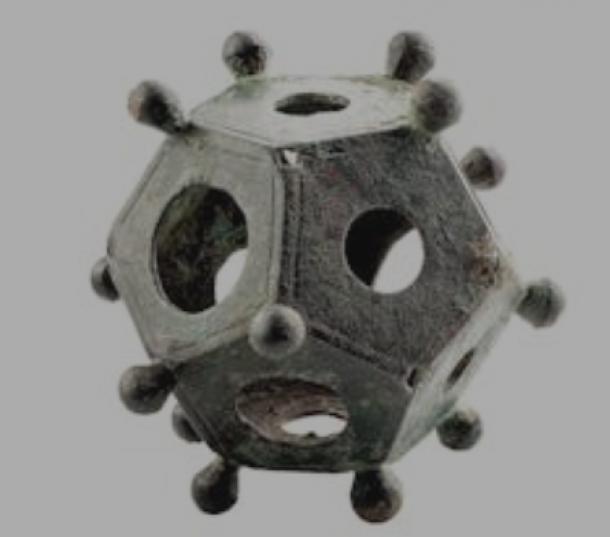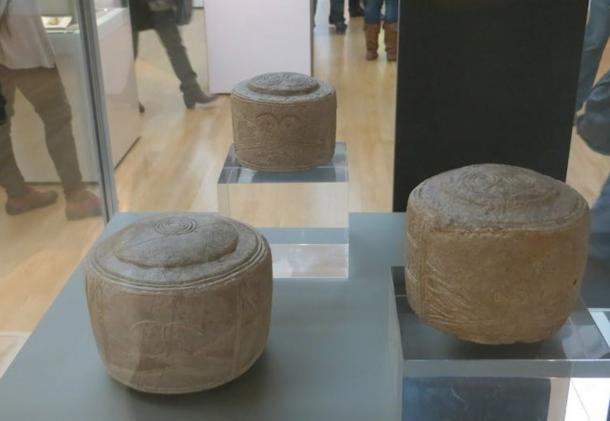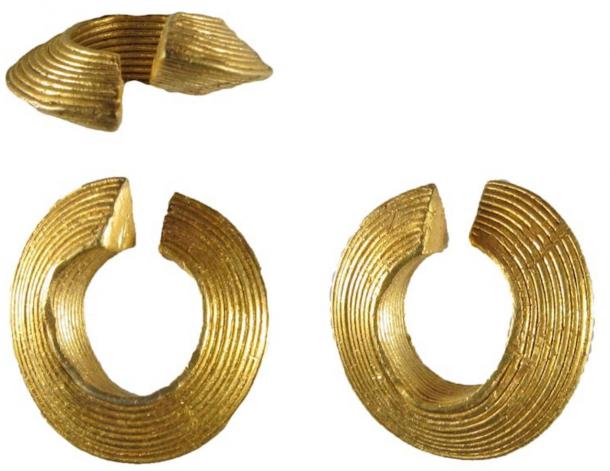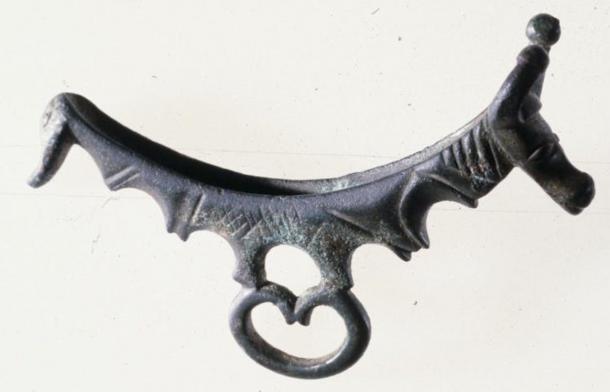Introduction
In the captivating realm of archaeology, the past often reveals itself through intriguing artifacts that leave experts and the public alike brimming with curiosity. While archaeologists are renowned for their ability to decipher the purpose and significance of most historical objects, there are a select few that continue to baffle even the most seasoned specialists. These enigmatic finds serve as a reminder that the past still holds many secrets, waiting to be unraveled.
In this blog post, we will embark on a journey to explore five remarkable examples of ancient artifacts that have stumped archaeologists, sparking endless speculation and debate. From the elaborately carved Neolithic stone balls of Scotland to the perplexing Roman dodecahedra, each of these objects holds the potential to unlock new insights into the lives and customs of our ancestors. Let’s dive in and uncover the mysteries that continue to captivate the archaeological community and the public alike.
Neolithic Stone Balls: A Puzzle in Stone
The Neolithic period, spanning from around 3200 to 2500 BC, has gifted us with a remarkable and enigmatic set of artifacts – the elaborately carved stone balls found predominantly in Scotland. Over 425 of these unique objects have been discovered, each one a testament to the skill and artistry of their Neolithic creators.
These stone balls, roughly the size of a cricket ball, are crafted from a diverse array of materials, including granite, sandstone, and even jet. Their surfaces are meticulously sculpted, with intricate designs that often feature raised circular discs, deep incisions, and captivating patterns of spirals and concentric shapes – motifs that echo the decorative elements found on pottery and monumental stones from the same era.
The discovery of these stone balls has puzzled archaeologists for centuries. While some have been found in burial contexts, and others in settlement sites, they are rarely, if ever, discovered in matching sets. This lack of context has made it challenging to determine their original purpose. Were they used as missiles to deter predators and pests? Weapons of war? Household ornaments? Measuring weights? Or perhaps even as mnemonic devices or ball bearings to move megaliths? The true function of these enigmatic artifacts remains elusive, despite the numerous theories proposed by researchers.
The Neolithic stone balls continue to captivate both professionals and the public, serving as a tantalizing reminder that the past still holds many unanswered questions, waiting to be explored and unraveled.

Roman Dodecahedra: Enigmatic Geometric Artifacts
Shifting our focus to the Roman period, we encounter another set of perplexing artifacts – the Roman dodecahedra. These intriguing objects, dating from the Roman era in Britain (43-410 AD), have recently resurfaced in the archaeological spotlight with the discovery of a new specimen from Norton Disney in Lincolnshire.
Approximately 130 of these finely crafted copper alloy objects have been found across the former Roman empire’s north-western provinces. Characterized by their distinctive geometric shape – a dodecahedron, or a 12-sided polyhedron – these artifacts have long puzzled archaeologists and historians alike.
One of the most intriguing aspects of the Roman dodecahedra is the lack of any known representations or descriptions in ancient art or literature. Additionally, these objects do not conform to a standard size, and they rarely exhibit any signs of wear or use, further complicating efforts to determine their original purpose.
Theories abound, from the practical, such as their use as measuring devices or as holders for yarn, to the more speculative, including their potential role in ancient rituals or as decorative objects. However, the true function of these enigmatic Roman artifacts remains a mystery, leaving archaeologists and enthusiasts alike to continue their quest for answers.
The discovery of new Roman dodecahedra, like the one found in Lincolnshire, serves as a testament to the enduring fascination with these geometric puzzles, and the ongoing efforts to unravel the secrets they hold about the lives and customs of the Roman people.

Neolithic Chalk Drums: Carved Cylinders of Enigma
Moving back in time to the Neolithic period, we encounter another set of intriguing artifacts – the Neolithic chalk drums. In 1889, three carved cylinders of chalk were discovered in a child’s grave in Folkton, North Yorkshire, sparking a wave of interest and speculation.
These Folkton Chalk Drums, as they have come to be known, are adorned with geometric decorations and what appear to be stylized representations of eyes, noses, and eyebrows. A fourth, undecorated drum was later discovered in Lavant, West Sussex, in 1993, and an even more ornate example was excavated at Burton Agnes in East Yorkshire in 2015.
The presence of these chalk drums in the carefully arranged graves of Neolithic children suggests a deeper significance beyond mere utilitarian function. Some researchers have proposed that the drums’ circumferences may have been associated with a standardized unit of length known as the “long foot,” while others have attempted to link the geometric markings to astronomical observations.
However, the most intriguing aspect of the Neolithic chalk drums is their apparent connection to the earlier-discussed Neolithic stone balls. The shared aesthetic traditions and motifs found on both sets of artifacts have led some to speculate that the chalk drums may have been references in stone to perishable containers, such as lidded wooden jars or baskets.
As with the Neolithic stone balls, the true purpose of these carved chalk cylinders remains elusive, leaving archaeologists and the public alike to ponder the significance of these enigmatic Neolithic artifacts and their role in the lives of our ancient ancestors.

Bronze Age “Lock-Rings”: Ornamental Puzzles
Shifting our focus to the Bronze Age, we encounter another set of intriguing artifacts that have long puzzled archaeologists – the so-called “lock-rings” from the late Bronze Age (circa 1000-800 BC).
These small, open-ring ornaments, crafted from exquisitely decorated gold sheet and wire, have been found predominantly in Ireland, Britain, and parts of France. Frequently discovered in matching pairs, these rings exhibit a range of intricate geometric designs, adding to their allure and mystery.
The traditional interpretations of these artifacts have suggested they may have been used as nose rings, earrings, or hair ornaments. However, these explanations have been met with skepticism, as various elements of the rings’ design would have made them uncomfortable or impractical to wear in such a manner.
Recent discoveries, such as the burials at Boncuklu Tarla in Turkey, where facial jewelry was found in close proximity to skulls, have provided some new context for understanding the potential use of these Bronze Age “lock-rings.” Yet, the true purpose of these enigmatic ornaments remains elusive, leaving archaeologists to continue their search for a more satisfactory explanation.
The Bronze Age “lock-rings” serve as a testament to the ongoing quest to unravel the mysteries of the past, as researchers strive to piece together the stories and customs hidden within these captivating artifacts.

Romano-British Cosmetic Grinders: Revealing the Secrets of Ancient Grooming
Our final stop on this journey through ancient artifacts takes us to the Romano-British period, where we encounter a set of intriguing objects known as “cosmetic grinders.”
These small, two-part copper alloy kits, consisting of a grooved “mortar” and a “pestle” (either rod-like and pointed or arched into a “rocker” shape), are typically adorned with decorative motifs, such as waterbirds and bovids, as well as occasional phallic symbolism.
Interestingly, these cosmetic grinders are primarily found in Britain, with relatively few examples discovered on the European mainland. Use-wear analysis has shown that these objects were used for a lateral grinding action, suggesting they were employed in the preparation of some substance.
The mystery surrounding these Romano-British cosmetic grinders lies not in their function, but rather in the nature of the materials they were used to process. Suggestions have ranged from medicines and aphrodisiacs to cosmetics and even narcotics, but the contents of the mortars have never been successfully analyzed.
This is where the role of amateur finders becomes crucial. Archaeologists urge these individuals to refrain from cleaning the cosmetic mortars, as the residues within could hold the key to unlocking the secrets of these enigmatic artifacts. By preserving the original contents, amateur finders can contribute invaluably to the ongoing efforts to unravel the mysteries of the past.

Conclusion: Embracing the Unknown
As we have explored these five captivating examples of ancient artifacts that continue to baffle archaeologists, a common thread emerges – the enduring fascination with the unknown. These enigmatic objects serve as a reminder that the past still holds many secrets, waiting to be uncovered and understood.
Whether it’s the elaborately carved Neolithic stone balls, the geometric Roman dodecahedra, the intriguing Neolithic chalk drums, the puzzling Bronze Age “lock-rings,” or the mysterious Romano-British cosmetic grinders, each of these artifacts represents a tantalizing puzzle that invites us to delve deeper into the lives and customs of our ancestors.
As we continue to explore and study these enigmatic finds, we not only expand our knowledge of the past but also cultivate a deeper appreciation for the ongoing journey of archaeological discovery. By embracing the unknown and remaining open-minded, we can uncover new insights that may challenge our existing assumptions and lead us to a more nuanced understanding of the human experience across the ages.
So, let us continue to be captivated by the mysteries of the past, for it is in the pursuit of these unsolved puzzles that we may just find the keys to unlocking the secrets of our shared human heritage.

